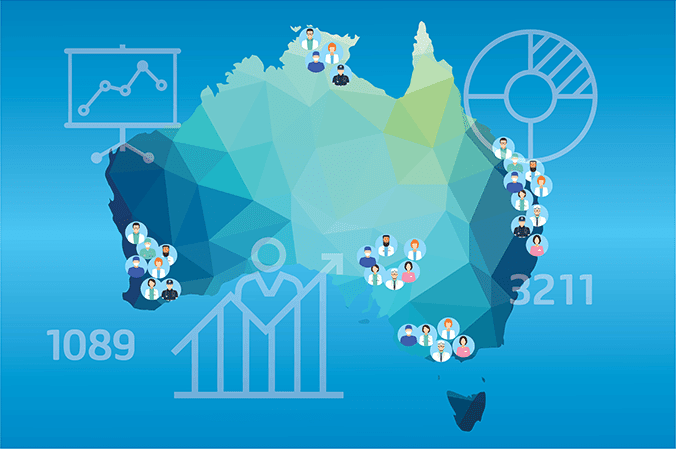What it takes to successfully establish your primary health care workforce profile

A comprehensive profile of the primary health care workforce in your region is an essential input for effective workforce planning.
But compiling the necessary data and keeping it up to date is easier said than done!
If you’ve ever attempted this task, you’ve most likely faced these challenges:
- multiple disjointed and inconsistent data sets and repositories
- inconsistencies in definitions for professions with the large number of different job titles
- data time lags with data not available in real-time
- lack of understanding about the challenges the health workforce is facing
- unable to engage effectively with your workforce in the region and build strategic partnerships
These challenges are not easily overcome.We have outlined four strategies for making sure your next workforce profile hits the mark.
Pragmatic and comprehensive workforce definition
This includes a detailed understanding beyond the well-studied, eminent primary health care providers, such as General Practitioners, nurses and midwifes, involving the broad range of allied health professionals, dentists, pharmacists and other health workers. In the past, Grosvenor designed, for example, a workforce benchmark typology to identify the primary duties, qualifications, Medicare eligibility and registration standard for particularly niche professions to assist with workforce planning.
Clever leveraging of information systems
Effectively and efficiently capturing, validating and maintaining workforce data includes developing:
- continual and, where possible, automated processes to collect, review, cleanse and complete existing datasets and repositories, maintained by your PHN, Government agencies and affiliates and industry bodies
- a single consistent data base management system, ideally with interactive workforce mapping capabilities
Be innovative – capturing the ‘hard to reach’
While creating a sophisticated survey is an art in itself, the subsequent distribution to hard-to-reach or, more notably, unknown health care providers (i.e. no available contact details) to gain an understanding of the depth and reach of the workforce in your region, requires ‘out of the box’ thinking.
This includes beyond the obvious promotion of your workforce survey on your PHN’s website, the use of social media (e.g. Facebook). Even more effectively is engaging your network of local service providers, health bodies and community members to help advocate your data collection efforts. This takes us to the final strategy.
Awesome (not mediocre) stakeholder engagement
In the absence of a national solution we found that access to comprehensive, reliable and timely primary health care data is further exacerbated by a lack of communication and collaboration among many health professionals and peripheral stakeholders including health bodies, academia and local service providers. In order to map your profile successfully and obtain the necessary data, these stakeholders need to look beyond traditional professional demarcation and organisational structures.
Building collaborative, proactive and sustainable relationships and networks that outlast any leadership turnover and staff changes is also essential for the successful implementation of your workforce strategy down the track.
What this might entail is establishing a steering group consisting of representatives across primary health that provides input throughout our workforce mapping project. Clearly and effectively articulate the vision and benefits of closer collaboration to this group and apply an inclusive and solutions-driven approach to empower the Steering Group to contribute actively to the project’s outcomes.
On a final note, don’t see your efforts in isolation but rather consider the integration of your workforce mapping and planning exercise as being part of the ‘big picture’ of the Australian medical workforce. That means sharing your results not only with the broad range of your stakeholders but at a national level, including the Department of Health.
Our team at Grosvenor can you help you with developing your workforce profile. Check out our most recent project for the North Coast Primary Health Network (NCPHN).






